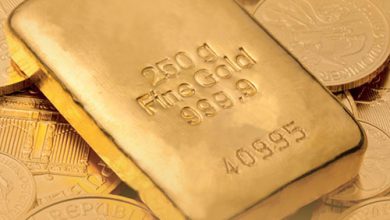BOOKRACK
By Vijitha Yapa
Why do we pay for text messages while emails are free? This is a question posed by best-selling author William Poundstone. He takes us behind the scenes to reveal the hidden psychology of values and how the ordinary public reacts to the most pervasive persuasive factor, namely price.
 The recent controversy where consumers are expected to pay more for less of Litro gas comes to mind when reading about Skippy peanut butter. The original containers were 18 ounce jars and the newly designed plastic option contained only 16.3 ounces. The trick was that Skippy charged the same price for less peanut butter.
The recent controversy where consumers are expected to pay more for less of Litro gas comes to mind when reading about Skippy peanut butter. The original containers were 18 ounce jars and the newly designed plastic option contained only 16.3 ounces. The trick was that Skippy charged the same price for less peanut butter.
In psychology literature, this is known as ‘coherent arbitrariness.’
Poundstone says it’s a theory of relativity where buyers are sensitive to relative differences rather than absolute prices. The price increase would have been US$ 3.99; instead, it was kept the same with less quantity in a new jar. The same psychology is applied to shrinking packages or even drinking yoghurt or fruit drinks.
The 1994 case in Albuquerque where a US jury awarded 2.9 million dollars in damages to Stella Liebeck after she spilled a cup of hot coffee from McDonald’s is an example of justice going too far. She placed the hot coffee between her legs, and pried open the lid to add the milk and sugar. The scalding liquid then spilled on Stella and she had to spend US$ 11,000 on skin grafts.
Liebeck asked McDonald’s to pay her US$ 20,000 but the fast food chain offered a paltry US$ 500. What price should be put on her suffering and McDonald’s culpability?
With assistance from lawyer S. Reed Morgan who claimed that the McDonald’s coffee was defective because it was too hot, she sued the seller – and the jury recommended US$ 160,000 for compensatory damages plus 2.7 million dollars in punitive damages.
Judge Robert Scott slashed the punitive damages to US$ 480,000. Finally, Liebeck is said to have settled for less than US$ 600,000.
Displaying a high-priced item in a store is a tactic used by many upmarket shops. Who would want to buy a US$ 1 million Hublot Black Caviar Big Bang watch with 322 black diamonds invisibly set to conceal any sign of metal?
Marketing consultant Dan Hill says that successful stores use high-priced items to create a mixture of anger and happiness. Anger because upper-middle-class consumers can’t afford such items and are thus happy to buy something else.
Another strategy is to contrast effects. So when item X is better than Y, it becomes a selling point in contrast and the shopper tries to justify the purchase.
Consultants Simon-Kucher & Partners often berate their clients for setting prices too low for some products as tags on luxury goods aren’t directly linked to a cost. Restaurant consultant Brandon O’Dell talks about an American restaurant offering a truffle and Kobe steak hamburger for US$ 100 – the point isn’t about selling such expensive hamburgers but customers seeing a 50 dollar steak and buying it because they believe it’s a bargain.
Another trick is to offer a larger item as well as a smaller similar one for half the price. Consumers think they’re getting a bargain and opt for the smaller item, which the vendor wants to sell anyway.
In Sri Lanka, worries about inflation dominate discussions as the government continues to print money. In July 2008, Zimbabwe’s then president Robert Mugabe released a Z$ 100 billion bill. Six months later, the Reserve Bank of Zimbabwe released a new Z$ 100 trillion bill worth approximately US$ 30.The inflation of the Zimbabwean Dollar peaked at a reported rate of 500 billion percent a year!
Economist Irving Fisher is described as the first great scholar of hyperinflation psychology. In 1922, he travelled to Germany to examine how average citizens were managing the country’s raging inflation.
In Berlin, he picked up a shirt and paid the stated price. The shopkeeper said the shirt he had bought would cost her the same amount to replace; and though the shopkeeper had sold it for a low price, she made a profit since she’d purchased it for less.
Internet marketing guru Marlene Jensen says if you have a product to sell for US$ 100, never price it at that. Rather, make it 149 dollars less a discount, to be sold at US$ 119 – because customers feel happy they’re getting a 149 dollar product for a mere 119.
This is common practice in Sri Lanka. Check the Sunday papers and see the discounts offered on TVs, fridges, household items and so on. Over a number of months, the price doesn’t change and customers are satisfied as they think they’ve got a bargain.
This book helps us understand so many aspects we take for granted and how marketing makes a difference.





